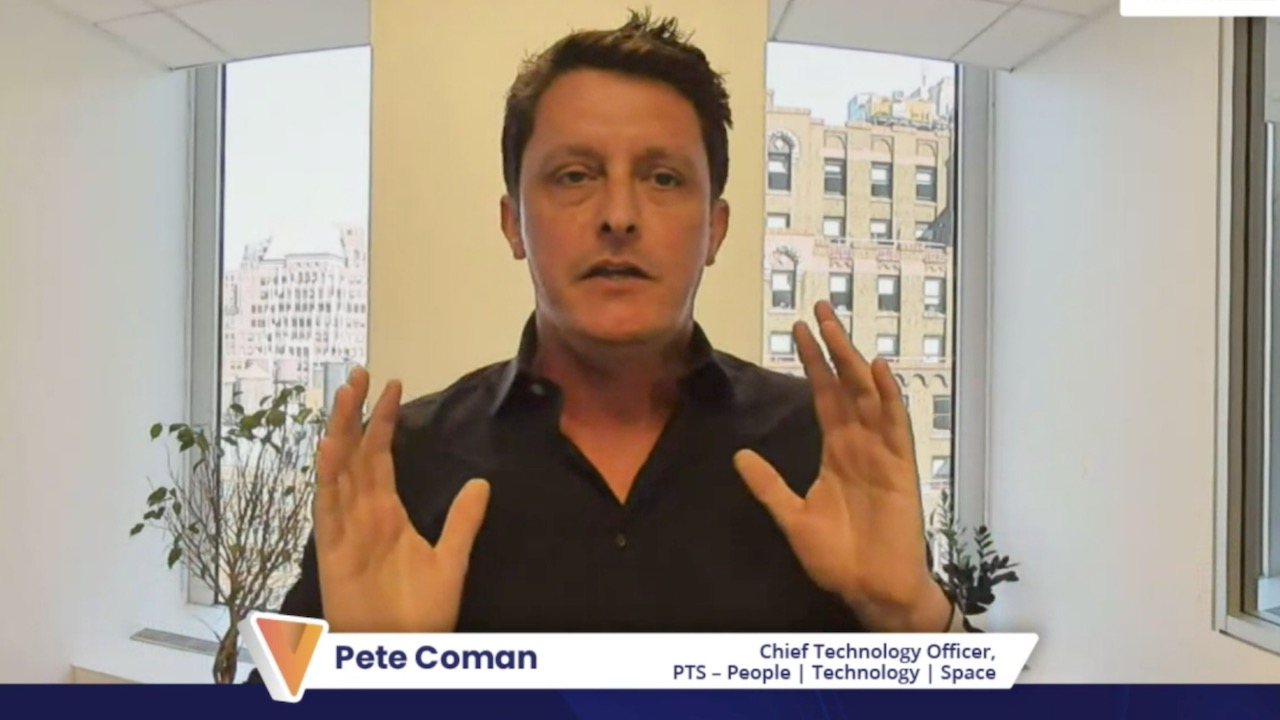Working from home might be working well for now, but we need to get back to the office eventually. And when we do, there will be a lot to rethink. This was the theme of the presentation “The Reimagined Workplace: The Role of Existing and Emerging Technology” on Wednesday during Almo Professional AV’s Spring E4 event.
Presented by Pete Coman, chief technology officer at PTS New York, the talk covered the reasons why we need to return to offices, design trends that are reshaping the way we use these spaces now, and emerging technologies that will further optimize the workplaces of the future.
Related: Almo Pro A/V to Provide OfficePro End User Software Training Packages
So why should we go back when we’re just as productive—if not more productive—working from home? According to Coman, it’s not just about us; we need to think about the next generation of workers. “I learned being mentored by others, by having people beside me to show me the ropes, and we can’t lose focus of the fact that the workplace is an incubator for the next generation,” he said. “We as industry professionals need to be giving back to the next generation coming through so we can help them learn and get this experience.” He also pointed to a quote by the late Steve Jobs emphasizing the importance of informal, in-person interaction in the development of creative ideation.
Coman then went on to highlight how the ideal office should operate in 2021 and beyond. The following are some of the key characteristics.
Frictionless
Our goal, Coman said, is to have our workplaces operate as simply as an Amazon Go store. “That is our goal as digital workplace experience designers: to design these seamless, frictionless environments,” he said. To accomplish this now, companies are implementing check-in kiosks, apps for reserving spaces in hotdesking offices, and the ability to use personal devices to control rooms. Going forward, Coman expects to see more voice control make its way into the office, as well as devices like the Amazon Echo Show. Another frictionless tech he’s seeing companies implement is intelligent cameras that automatically frame meeting participants’ faces, delivering the close-up shots to which we’ve become accustomed from remote work on our laptops.
Platform Neutral
Now that videoconferencing is central to our work lives, it’s key that the rooms in our workplaces are capable of handling all of the platforms out there. “Manufacturers need to develop technology that allows us to add a room that we didn’t create,” Coman said. “If I get invited to a Teams meeting and I have Zoom Rooms, I should be able to add my Zoom Room to that meeting invite and walk in and have [one touch to join].”
More Cloud
Coman believes that cloud computing will help to further improve the user experience in offices. “How do we reduce the hardware required for these spaces?” he asked. He offered the example of software DSP (digital signal processing): “Whether you’re running it in the cloud or on a PC locally, having the ability to enhance the audio experience without having another black box in the room is a real advantage and we’ll start to see more organizations going down that path.”
Flexible, Adaptable
With uncertainty around how companies will be utilizing their space going forward, designing for flexibility has never been more important. “We’re designing the power and the data to be in locations that are appropriate if the room needs to be flipped or the purpose needs to be changed,” Coman said. He urges designers to have discussions with companies at the outset: “What else could this space be used for? Get the infrastructure ready, and work out how these rooms could be used or could be transformed moving forward.”
Consider Emerging Technologies
Coman spent a lot of time highlighting innovative new solutions that he believes will have an impact in the office of tomorrow:
- Transparent OLED displays integrated into glass-walled boardrooms, easing the compromise between tech and aesthetics
- Acoustic air curtains that frame out workspaces with invisible dividers that facilitate meetings from desks without interrupting those nearby
- Induction charging built into work surfaces, streamlining the ability to come in and start working from a laptop, and eventually, wireless power
- More personal climate control
- More personal lighting, implementing circadian rhythms
- Technology to make workplaces healthier
- Wearable technology that monitors our health and mood
In the nearer future, though, Coman sees tech like facial detection and people counting sensors that regulate occupancy, as well as analytics software that provides a better picture of space usage growing in adoption sooner than later. “COVID has fast-tracked a lot of these technologies,” he said. “Previously, people thought ‘That’s a nice idea; that’s a nice-to-have.’ Now these technologies are really becoming a must.”

